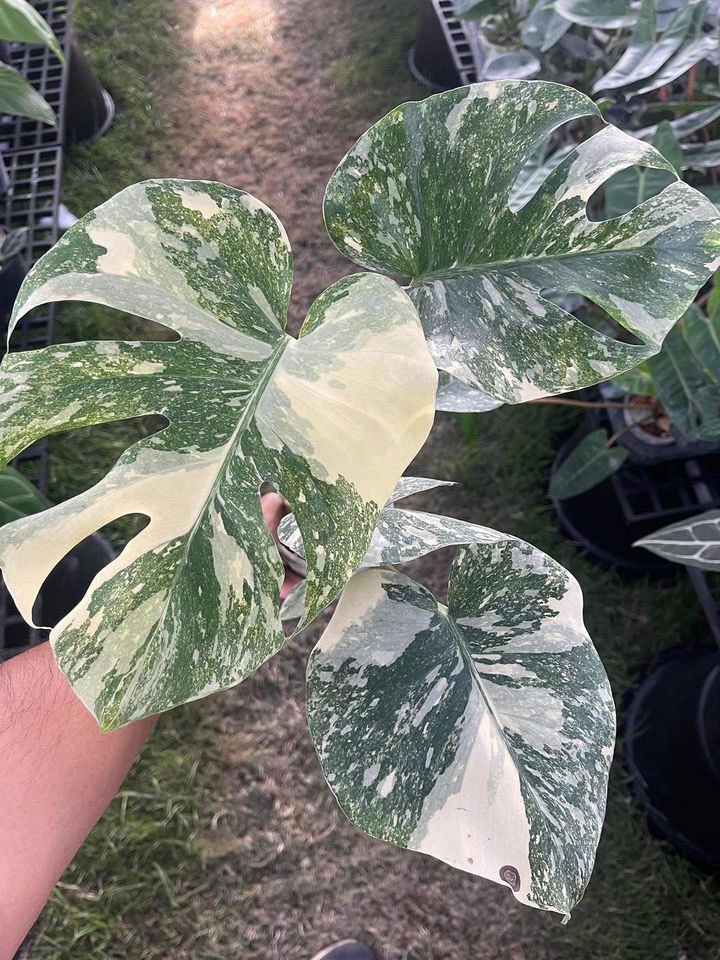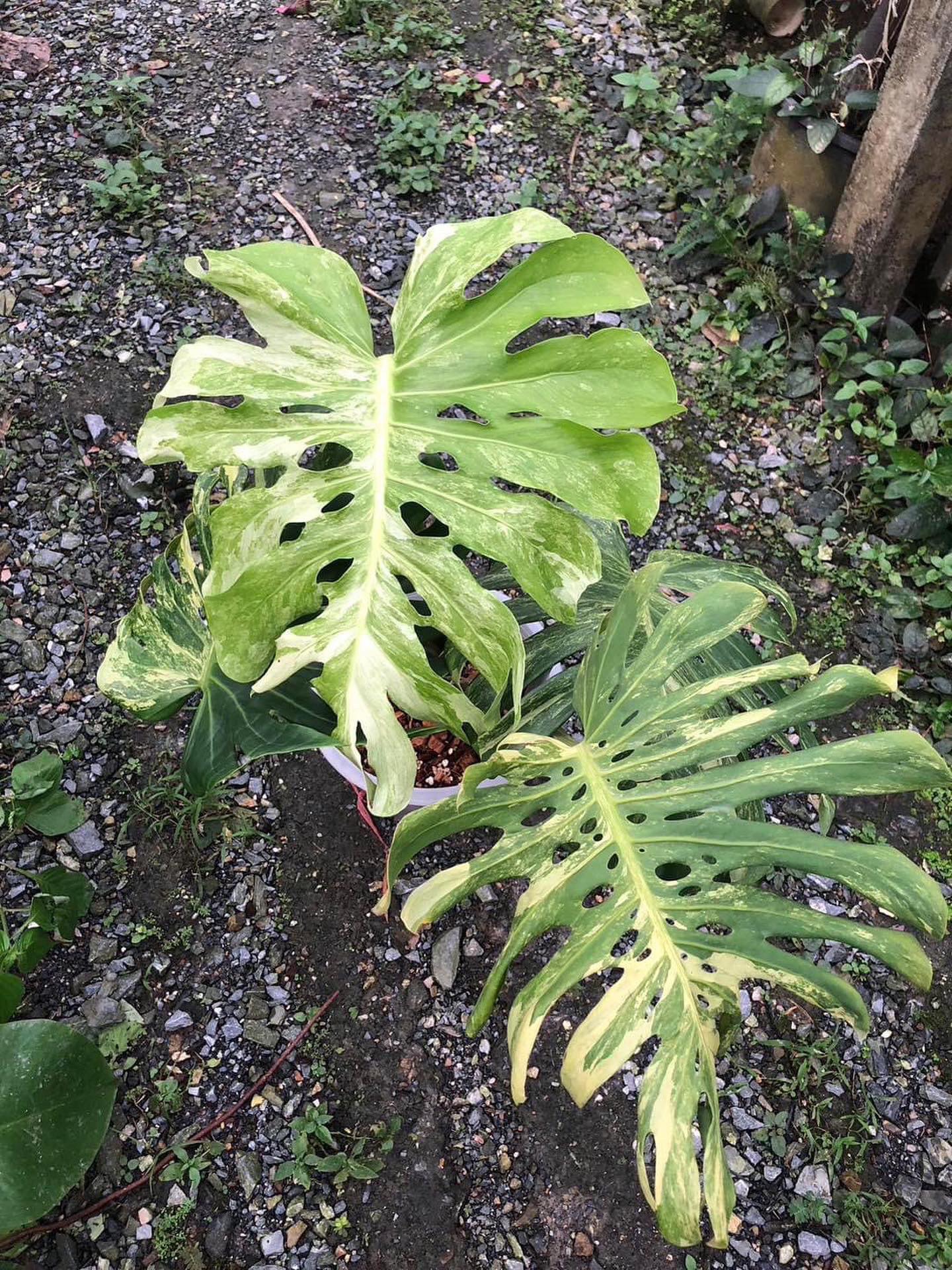Variegated plants, with their striking leaves mottled in different colors, have become increasingly popular in recent years. The variegation results from a lack of chlorophyll in parts of the leaves, causing them to turn white, yellow, pink or red. This unique appearance makes them stand out in any garden. However, the lower chlorophyll levels raise questions about the overall health and vigor of these plants. Let’s take a closer look at whether variegated plants are as robust as their green counterparts.

Growth rate and size
Slower growth
Variegated plants often grow at a slower pace than non-variegated varieties. The lack of chlorophyll limits their ability to photosynthesize efficiently. As a result, they may take longer to reach maturity, produce flowers and set seed. For example, variegated tulips and daffodils emerge and bloom later than the normal versions.
Smaller size
In addition to slower growth, variegated plants tend to achieve a smaller overall size. Chlorophyll enables plants to convert sunlight into energy and fuels plant growth. With less chlorophyll, variegated plants generate less energy and nutrients to support extensive growth. They may produce smaller leaves, shorter stems and smaller flowers compared to their all-green relatives.

List of the most sought after Rare Variegated Plants in 2023
Resource needs
Sunlight
While some shade is fine, variegated plants require adequate sunlight to thrive. The remaining chlorophyll needs sufficient light exposure to photosynthesize. Too much shade causes them to struggle producing energy. Variegated plants placed in deep shade will often revert back to all green leaves to increase light capture.
Soil nutrients
These plants need relatively nutrient-rich soil to compensate for their lower photosynthetic output. Organic material like compost provides important nutrients. Occasional fertilizer supplements essential elements like nitrogen. If the soil lacks nutrients, variegated plants can become stunted and decline in health.

Environmental stresses
Heat and cold
The variegated leaves make plants more vulnerable to temperature extremes. The lighter leaf colors absorb more heat. Meanwhile, lower chlorophyll content provides less protection from cold damage. Hot afternoon sun or early spring frosts can scorch their delicate foliage. Careful siting and weather protection is important.
Pests and diseases
The inherent stresses from reduced chlorophyll may predispose variegated plants to certain pests and diseases. For instance, viruses can sometimes trigger variegation by interfering with chlorophyll production. These plants also tend to attract more aphids, possibly due to nutrient deficiencies. Careful monitoring and early treatment of any issues is key.
Propagation difficulties
Seeds
Variegated plants often produce less viable pollen and seeds. The genes responsible for leaf variegation interfere with reproduction. As a result, seed-grown plants from variegated parents frequently revert back to all green. The variegation trait can become diluted or lost entirely after a few generations.
Cuttings
Taking cuttings helps maintain desirable variegated traits that might otherwise disappear from seed-grown offspring. However, because variegation is caused by a viral infection or genetic mutation, propagating new plants can be tricky. Success rates with cuttings are highly variable and some variegated plants are nearly impossible to clone reliably.
Conclusion
While slower growing and more particular, variegated plants can thrive when properly sited and cared for. Their uniqueness and visual appeal make the extra effort worthwhile. Understanding their cultural requirements and being vigilant about pests enables gardeners to successfully overwinter these beautiful plants year after year. With careful propagation techniques, their much-admired foliage can continue delighting for generations.
FAQ
FAQ 1: Are variegated plants less healthy than non-variegated ones? Answer: Variegated plants can be just as healthy as non-variegated plants if they receive the proper care. However, they may require some extra attention because their variegated leaves often have less chlorophyll, making them less efficient at photosynthesis.
FAQ 2: Do variegated plants need more sunlight to thrive? Answer: Variegated plants typically require more sunlight compared to their non-variegated counterparts. The additional sunlight helps compensate for the reduced chlorophyll content in their leaves, aiding in photosynthesis and overall health.
FAQ 3: How do I care for variegated plants to keep them healthy? Answer: To maintain the health of variegated plants, provide them with well-draining soil, moderate humidity, and regular watering. Avoid over-fertilizing, as variegated plants can be sensitive to excess nutrients. Also, be mindful of their sunlight requirements and protect them from extreme temperatures.
FAQ 4: Can I propagate variegated plants to create more healthy specimens? Answer: Yes, you can propagate variegated plants through methods like stem cuttings or division. However, it’s important to choose healthy, variegated sections for propagation to ensure the new plants inherit the variegation. Variegated plants can revert to non-variegated forms if not propagated correctly.
FAQ 5: What are common signs of stress or illness in variegated plants? Answer: Common signs of stress or illness in variegated plants include yellowing or browning leaves, leaf drop, and stunted growth. Pests, diseases, improper watering, or inadequate light can all contribute to these issues. Regular inspection and prompt action can help keep variegated plants healthy.
See more Unlock Plant Variegation Secrets – Enhance Your Garden!

